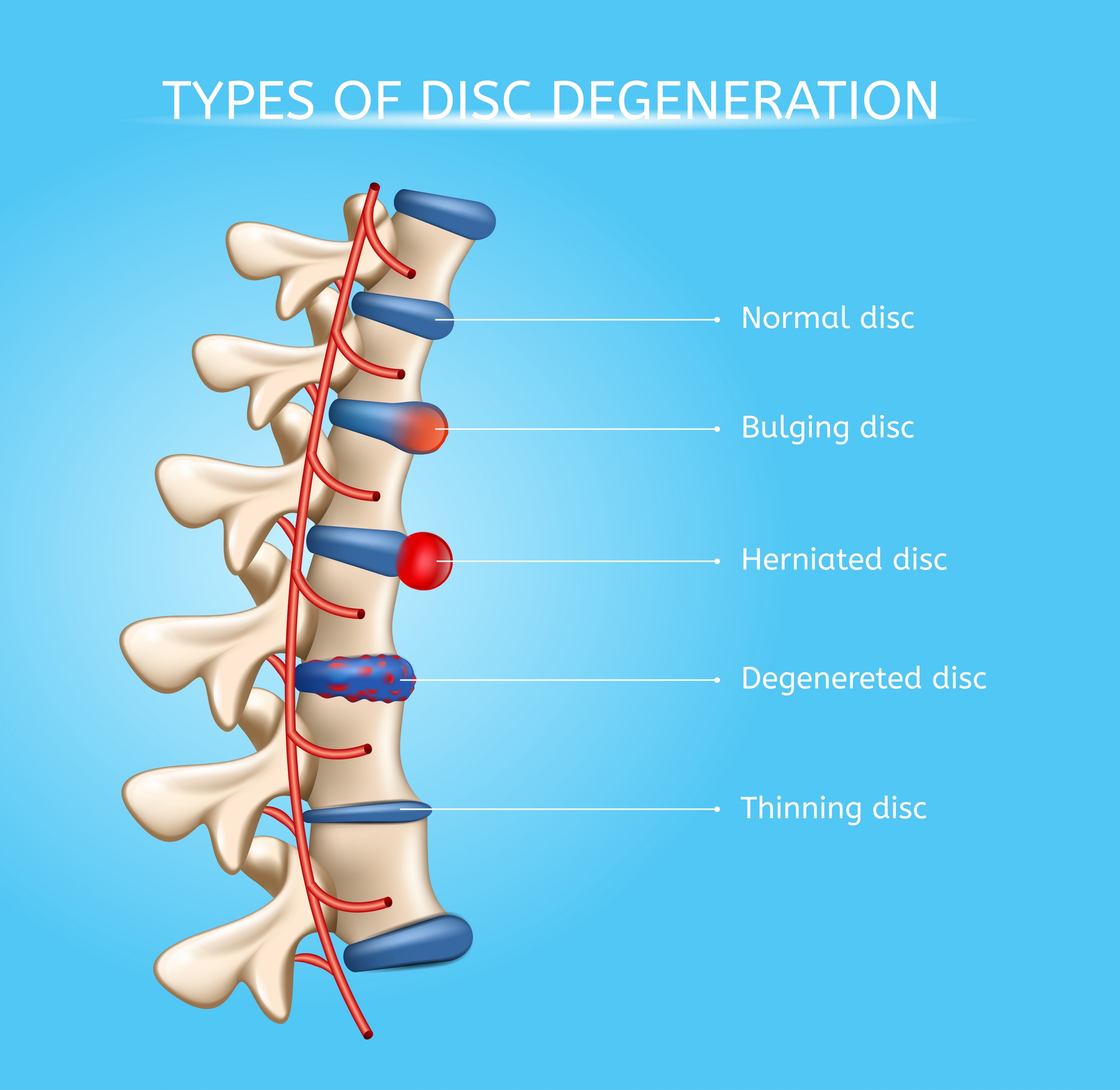Looking to manage symptoms and reduce pain?
Here are some things to avoid with degenerative disc disease.
As we get older, it’s very common for our bodies to start showing their age. However, for those living with degenerative disc disease, this process generally happens earlier—and causes more pain.
If you’ve recently been diagnosed with disc degeneration, you’re probably wondering what to expect. In this guide, we’ll talk about some things to avoid with degenerative disc disease as well as steps you can take to slow the progression of this condition.
What Is Degenerative Disc Disease?
Degenerative disc disease (DDD) is a condition affecting the spinal discs, slippery cartilage discs between each vertebrae. These discs act as shock absorbers, cushioning the spine from impact.
In someone with DDD, the spinal discs begin to wear out, weaken, thin, or even collapse. As a result, the vertebrae rub against each other, causing pain. In some cases, spinal discs can bulge or even rupture, which can put pressure on the surrounding nerves and soft tissues.
DDD can occur anywhere in the spine, but most often strikes the neck or lower back.

What Causes Degenerative Disc Disease?
Several factors can contribute to the development of DDD.
- Age: Over time, intervertebral discs lose hydration and elasticity. The loss of water causes the discs to become thinner.
- Wear and Tear: Daily activities and regular wear and tear on the spine over time can lead to disc degeneration.
- Injury: An injury that causes the outer layer of the disc to bulge, crack, or rupture (known as a bulging or herniated disc) can start or accelerate the degradation process.
- Obesity: Excess body weight can put more pressure on the spinal discs, causing them to wear down much faster than normal.
Nearly every adult over the age of 40 will show some form of disc degeneration, but not everyone has DDD. However, if you are at risk, you should take steps to reduce the progression of this condition.

Stages of Degenerative Disc Disease
Degenerative disc disease is a progressive condition that typically evolves through four stages.
- Stage 1: Dysfunction – In the earliest stage of DDD, the discs begin to shrink, affecting the curvature of the spine. Pain in this stage is usually minimal and is often intermittent.
- Stage 2: Dehydration – As the discs become more dehydrated, the pain becomes more constant and/or severe, especially after high-impact exercise or prolonged sitting. Small tears may even occur in the outer layer of the discs.
- Stage 3: Stabilization – As discs become thinner and bone starts to rub against bone, your body will attempt to protect itself by forming bone spurs. In some cases, the vertebrae may start to fuse together. This can severely limit your range of motion and cause severe pain.
- Stage 4: Collapsing – The discs have thinned, herniated, or disintegrated so much that your spine loses height. At this point, surgery is the most common treatment option.
With degenerative disc disease, early detection is an important step in slowing the progression of this condition.
Things To Avoid With Degenerative Disc Disease
To slow the progression of degenerative disc disease (as well as manage your symptoms), it’s crucial to be mindful of the activities that can accelerate disc degeneration.
By understanding and avoiding certain risk factors, individuals can take proactive steps towards maintaining spinal health, alleviating pain, and enhancing overall quality of life.
Things to avoid with degenerative disc disease include:
- Heavy lifting and lifting with improper form;
- High-impact activities, such as jumping;
- Twisting your spine (such as swinging a golf club or tennis racket);
- Poor posture;
- Inflammatory foods, such as sugar, fried foods, alcohol, and processed meat.

How To Slow Degenerative Disc Disease
While there is no way to reverse degenerative disc disease, you can slow its progression by incorporating certain habits into your daily lifestyle.
Embracing a proactive approach towards spinal health can significantly mitigate the impact of DDD, offering a pathway to reduced pain and improved functionality.
Add the following activities to your treatment plan:
- Stretching and light activity to strengthen core muscles and increase blood flow to the spine;
- Improve your posture, whether standing, sitting, or driving;
- Lose excess weight to relieve pressure on the discs;
- Treat inflammation through diet, exercise, and getting enough sleep.
Can a Chiropractor Treat Degenerative Disc Disease?
Chiropractors have a wealth of knowledge about the spine and other joints, making them the perfect addition to your medical team. With chiropractic care, the goal is to improve spinal function and alleviate pain without resorting to surgery or medications.
Chiropractic treatment aims to enhance the quality of life for patients with DDD through non-invasive techniques. In addition to adjustments to treat small misalignments of the vertebrae, chiropractors can also employ flexion and ext to gently stretch the discs.
Flexion-distraction therapy is a common treatment for bulging and herniated discs and also helps improve spinal flexibility.
The goal of chiropractic care is not to cure degenerative disc disease but to minimize its impact on the patient’s life by managing symptoms and improving spinal function.
Conclusion
Managing degenerative disc disease (DDD) is a multifaceted approach that requires awareness, lifestyle adjustments, and proactive health management.
By understanding the things to avoid with degenerative disc disease and incorporating beneficial practices into your daily life, you can significantly slow the progression of DDD and enhance your quality of life.
Remember, it’s not just about avoiding certain activities; it’s also about embracing positive changes such as regular exercise, proper nutrition, and good posture. Additionally, incorporating chiropractic care into your treatment plan can offer a holistic approach to managing symptoms and improving spinal function.
With the right strategies and support, living with DDD can be manageable, allowing you to lead a fulfilling and active life despite the challenges.








